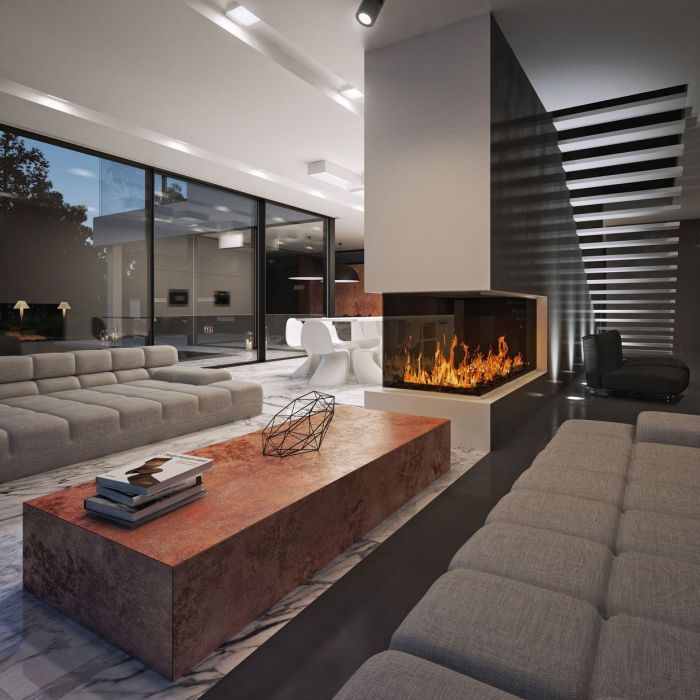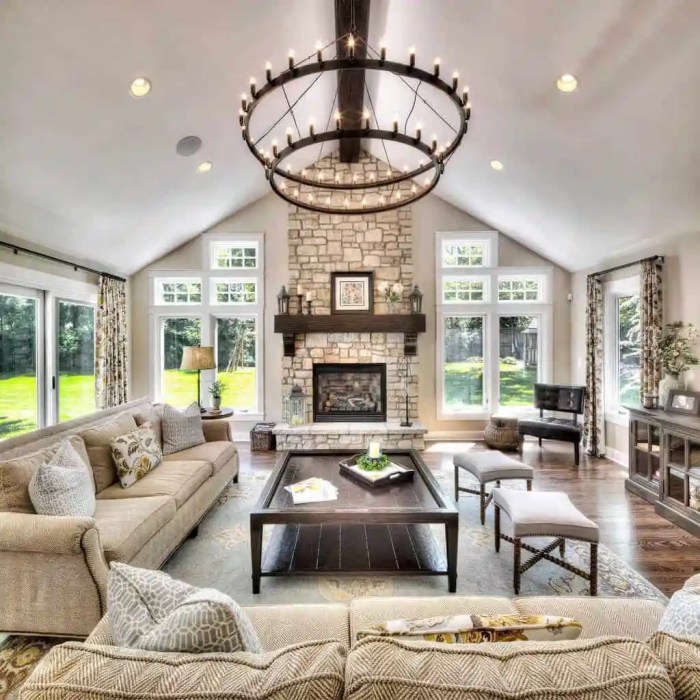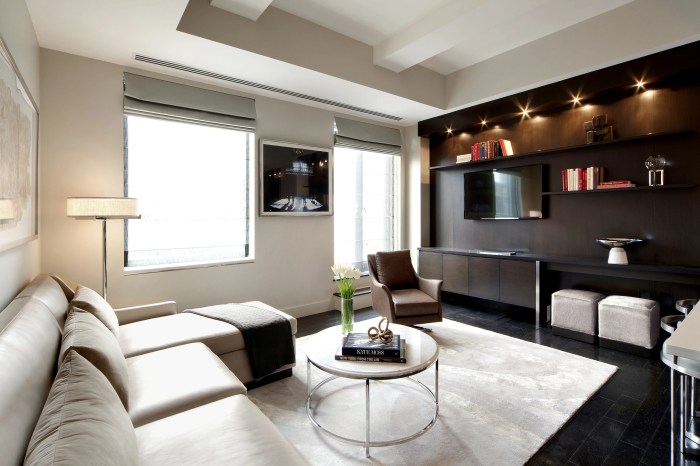Optimizing House Room Design for Functionality and Aesthetics
Exploring the intricate world of house room design, this introduction delves into the importance of creating spaces that are not only visually appealing but also highly functional. From the impact of design on daily living experiences to the elements that shape a room, this overview sets the stage for a captivating discussion on optimizing house room design.
As we navigate through the different aspects of room layout, spatial planning, personal style infusion, and current trends, we uncover the secrets to crafting a space that truly reflects individuality and timeless elegance.
Importance of House Room Design
Well-thought-out room design plays a crucial role in enhancing the overall functionality and aesthetics of a house. It goes beyond just arranging furniture and decor; it involves creating a space that caters to both practical needs and visual appeal.
Impact on Functionality
A good room design can optimize the layout of the space, making it more efficient for daily activities. For example, strategic placement of furniture and storage solutions can maximize usability and accessibility, contributing to a smoother flow and organization within the room.
Impact on Aesthetics
The design of a room greatly influences its ambiance and visual appeal. By carefully selecting colors, textures, and decor elements, a well-designed room can evoke a sense of harmony, comfort, and style. This aesthetic aspect can significantly impact the mood and atmosphere of the space.
Enhancing Daily Living Experiences
When a room is thoughtfully designed, it can enhance the overall living experience of the inhabitants. For instance, a cozy and inviting living room can promote relaxation and social interactions, while a well-organized kitchen can make cooking and meal preparation more enjoyable and efficient.
Ultimately, a good room design can contribute to a better quality of life for the residents.
Elements of House Room Design

When designing a room in a house, several key elements must be considered to create a cohesive and visually appealing space. Elements such as lighting, color schemes, furniture placement, and decor play a crucial role in shaping the overall look and feel of a room.
Lighting
Proper lighting is essential in any room design as it not only illuminates the space but also sets the mood and ambiance. Natural light can make a room feel more spacious and inviting, while artificial lighting can be used to highlight specific areas or create a cozy atmosphere.
Color Schemes
The choice of colors in a room can greatly impact the overall design. Different color schemes can evoke different emotions and feelings. Warm colors like red, orange, and yellow can create a vibrant and energetic space, while cool colors like blue and green can promote relaxation and calmness.
Furniture Placement
The way furniture is arranged in a room can affect the flow and functionality of the space. Proper furniture placement not only ensures comfort and ease of movement but also contributes to the overall aesthetic appeal. It is important to consider the size of the room and the functionality of each piece of furniture when arranging them.
Decor
Decor elements such as wall art, rugs, pillows, and other accessories add personality and character to a room. These decorative items can tie the room together and complement the overall design theme. It is essential to choose decor pieces that reflect your style and taste while enhancing the visual appeal of the space.
Room Layout and Spatial Planning
Efficient room layout and spatial planning are crucial aspects of interior design that can greatly impact the functionality and aesthetics of a space. By strategically organizing furniture, fixtures, and decor, you can create a harmonious environment that maximizes both comfort and usability.
Optimizing Space Utilization
- Use multifunctional furniture pieces, such as storage ottomans or foldable tables, to make the most of limited space.
- Consider the traffic flow within a room and ensure that there is enough space for easy movement.
- Utilize vertical space by installing shelves or wall-mounted storage units to free up floor space.
- Choose furniture that fits the scale of the room to avoid overcrowding or making the space feel empty.
Innovative Room Layouts
- Open-concept layouts that combine living, dining, and kitchen areas can create a sense of spaciousness and connectivity.
- Creating a designated work area within a bedroom or living room by using room dividers or furniture arrangements.
- Utilizing built-in storage solutions, such as under-stair drawers or hidden cabinets, to maximize storage without sacrificing space.
- Opting for modular furniture that can be rearranged to suit different functions and layouts, providing flexibility in design.
Incorporating Personal Style
When it comes to house room design, incorporating personal style is key to creating a space that truly feels like home
Infusing Personal Style
One way to incorporate personal style into your house room design is by incorporating items that hold sentimental value. Whether it's family heirlooms, travel souvenirs, or handmade pieces, these items can add a personal touch to your space.
- Displaying artwork or photography that resonates with you can also enhance the overall aesthetic of the room while showcasing your individuality.
- Choosing furniture and decor pieces in colors and patterns that you love can help create a cohesive look that reflects your personal taste.
- Mixing different design styles that appeal to you, such as combining modern and vintage elements, can result in a unique and eclectic space that speaks to your personality.
Blending Personal Taste with Design Principles
While infusing personal style is important, it's also essential to strike a balance with design principles to ensure a harmonious and well-designed space. Here are some techniques to blend personal taste with design principles:
- Consider the room's function and layout when incorporating personal items to maintain a sense of balance and functionality.
- Experiment with different textures and materials to add depth and interest to the space while staying true to your personal style.
- Focus on creating a cohesive color palette that reflects your preferences while keeping in mind principles of color theory for a visually appealing room.
Creating a Unique Space
Creating a unique space that reflects your individuality involves a thoughtful curation of elements that speak to your personal style. Here are some examples of how to achieve this:
- Customizing furniture pieces or decor items to align with your design aesthetic can make the space feel truly one-of-a-kind.
- Incorporating elements of nature, such as plants or natural materials, can bring a sense of tranquility and personal connection to the room.
- Adding personal touches like family photos, favorite books, or unique souvenirs can further enhance the space and make it distinctly yours.
Trends in House Room Design

House room design trends are constantly evolving, influenced by a variety of factors such as lifestyle changes, technological advancements, and cultural shifts. Staying up-to-date with the latest trends can help you create a modern and stylish living space that reflects your personality and preferences.
Popular Styles, Materials, and Color Palettes
When it comes to popular styles in house room design, minimalist and Scandinavian styles continue to dominate the scene. These styles emphasize clean lines, simplicity, and functionality. In terms of materials, natural elements such as wood, stone, and metal are widely used to add warmth and texture to the space.
As for color palettes, neutral tones like white, beige, and grey are popular choices for creating a timeless and versatile look.
Incorporating Trends with Timeless Appeal
- Blend classic and contemporary elements: Combining traditional pieces with modern accents can create a balanced and timeless look.
- Focus on quality over quantity: Investing in high-quality furniture and decor pieces that stand the test of time is key to creating a lasting design.
- Accessorize with trendier items: To incorporate current trends without overwhelming the space, opt for trendy accessories like throw pillows, rugs, or artwork that can easily be replaced or updated.
- Personalize with unique touches: Infusing your personal style through unique decor items, family heirlooms, or DIY projects can help create a space that feels truly yours while still staying on-trend.
Closing Notes

In conclusion, house room design is a dynamic blend of creativity and practicality, where every element plays a crucial role in shaping the ambiance of a space. By incorporating personal style and staying attuned to current trends, one can create rooms that are not just beautiful but also deeply reflective of their unique personality.
Commonly Asked Questions
How does room design impact daily living experiences?
Room design can significantly affect daily living experiences by influencing mood, productivity, and overall functionality of a space.
What are some key elements to consider in house room design?
Key elements include lighting, color schemes, furniture placement, and decor choices, all of which contribute to the overall aesthetics and functionality of a room.
How can one infuse personal style into room design?
Infusing personal style into room design involves blending design principles with individual taste, using unique decor pieces, color choices, and layout preferences.